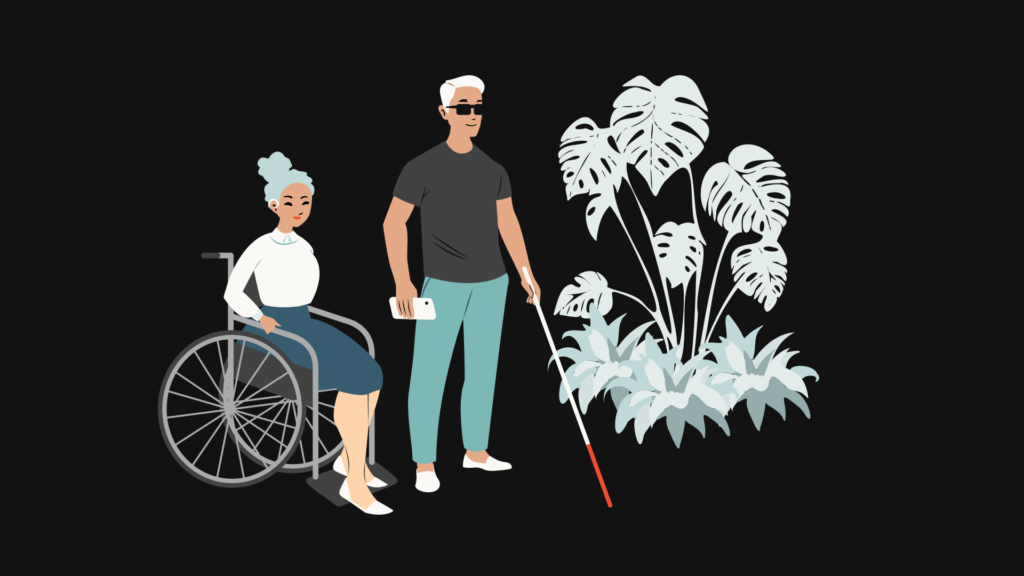Table of Contents

One thing we must consider with digital media is the people with disabilities. Some disabled people have difficulties reading and turning pages. Because everyone wants information on their phones, assistive technology makes digital material more portable and accessible to all users.
Inaccessibility is irritating and alienating. These challenges are the most aggravating digital content barriers for users on websites, mobile apps, email, and at work.
Read on to learn more about the challenges of text communication for people with disabilities.
Restricted Captioning
Videos with no closed captions are a big barrier to accessibility. This is something that everyone who has watched a social media video with their phone muted is familiar with. For the deaf, videos without captions are next to useless. On YouTube, avoid using auto-captioning. Frequent editing is required, as the speech-to-text conversion is sometimes inaccurate. Transcription of speech from people with accents or unfamiliar words is extremely difficult.
No Alternative Text (Alt-Text)
Consider your social media feed without photographs of your pets and loved ones. Individuals who are blind or have impaired eyesight cannot tell what an image is without alternative text. Blind persons were most irritated by the lack of alt text in a poll of internet difficulties. Assistive technology users cannot access charts and graphs without alt language.
No Headings
The majority of writings necessitate the use of headings. Nobody wants to read pages with nothing but long paragraphs. Headings aid everyone in navigating your information, especially those who require assistive technology. Assistive technology users, like sighted people, scan headlines to find material. Use only one Heading level one (for your title), and then outline the remaining headings.
Lack of Proper Scaling, Fonts, and Contrast
Individuals of all abilities are affected by accessibility difficulties. The majority of people favor sans serif fonts in sizes ranging from 14 to 16 points. Individuals with low vision, dyslexia, outdoor or low-light screen readers, and impaired eyesight will find them easier to read.
Color contrast should be maintained. Use light and dark colors sparingly against light and dark backgrounds. Several complementing contrast checks can be beneficial. It is also important to connect the text with colors and accents.
Contrast and zoom modifications can help people with low vision. Avoid cramming information into small spaces and spacing out your lines.
Lack of Keyboard-Only Features
People with disabilities are unable to use a computer mouse. Individuals who are blind, have poor vision or have limited movement often utilize just the keyboard to navigate digital information. Examine your pages and documents to ensure that all information and apps are keyboard accessible. Avoid keyboard “traps” that prevent tab-outs without a mouse. One of the most vexing accessibility difficulties for persons with impairments is getting stranded while searching for information or conducting business online.
Solving the Issues: Augmentative and Alternative Communication (AAC)
Augmentative and Alternative Communication (AAC) offers Communication technologies, methods, strategies, and tools that supplement or substitute natural speech. These assist people who have difficulty speaking.
The word augmentation denotes “addition.” Augmentations are speech additions (e.g., sign language, pictures, a letter board). This aids in clarifying your point. Meanwhile, the “alternative” part of AAC allows people to comprehend and understand what you are saying. This calls for a different method of communication.
AAC includes tools, systems, technologies, and procedures. These assist people who are deaf or not verbal, as well as those with speech issues.
Conclusion
In a time when we are being made to be more aware of disabilities, we are also called to make environments inclusive and sustainable. One of the environments we must keep safe is the digital sphere, especially in these modern times. Now that you know more about the challenges that people with disabilities encounter with text communication and digital media, it is time we put the work in to face them and integrate the right solution.
Fleksy is helping several AAC companies such as Tobii Dynavox with our keyboard technology to enhance communication for consumers with disabilities globally. Contact us today to discover our solutions, products and services!